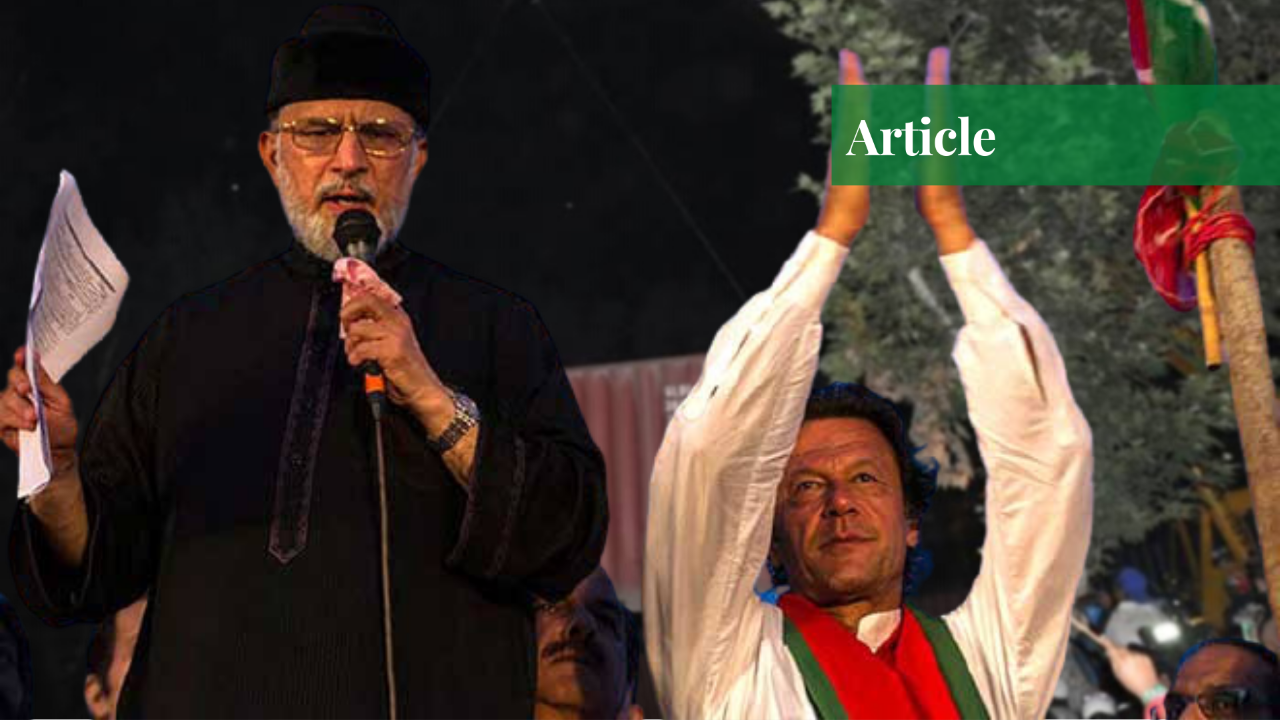Ms. Alina Fayaz is currently pursuing a Bachelor's in International Relations from National Defence University, Islamabad.
History
The history of the dharna culture in Pakistan traces back to the time even before the partition of the subcontinent. The device was adopted by Gandhi in his non-violent civil disobedience movements. Later, many political and religious groups adopted this strategy in Pakistan. For the past seven years, the major revival of this dharna culture has been witnessed, making it an annual or bi-annual tradition.
The social fabric of the country has been adversely impacted by the bad name brought by the dharna politics in Pakistan. Every individual has a fundamental right to peacefully protest against any issue, but this solution is irrational and human reason does not allow you to demand your peace at the cost of someone else.
Moreover, the present government, which, in democratic states like Pakistan, is established by the majority, cannot be pressurized by taking to the streets. This approach is not only aggressive but also yields to social evils like intolerance, anger, violence, and insecurity. Thus, the tilt towards such a culture will harm the citizens as well as the state.
How the Pakistani Sit-ins are Different?
The general sit-ins include the occupation of an open area generally a field where protestors peacefully sit down and are addressed by the leaders who have a particular set of demands that are forwarded to the political leaders in power. The protestors of Pakistan hit the most fragile area, Islamabad, strategically significant that further aids to paralyze the whole capital.
Moreover, the support by particular leaders, especially the oppositional leader, propagate and promote the dharna culture. The leaders have no hopes from the institutions and according to them, only sit-ins can provide them justice rather than courts. The recent sit-ins bring about another damaging factor to the masses and that is nothing else but the COVID-19 pandemic.
Such public engagements do not allow proper SOPs to be followed and act as a breeding ground for the virus. There is no check and balance among the crowd and a large-scale spread of the virus may take place. The people of Pakistan need to understand that the virus has already caused enough destruction and Pakistan cannot suffer more damage.
The best way to deal with such a crucial problem is immediate negotiations and an adequate response to address the protestors. Moreover, the citizens should try their best not to damage their states and should prevent such activities.
Pakistan and Dharna Culture
In Pakistan, dharna politics own the center stage, damaging the legitimacy of Pakistan’s government and raising many questions against it. The technique has been successfully used to pressurize the governments and for the past seven years, the use of such tactics escalated. The famous sit-in of Pakistan Tehreek-e-Insaaf (PTI) in 2014, brought a new wave of dharnas, lockdowns, and warnings disrupting the peace of the country.
Not only the peace but the economy of the country has also been crippled down as the 126 days long protests in 2017 caused a loss of nearly 3.7 trillion Pakistani Rupees. After the partition in 1958, the first sit-in of Pakistan happened when the first Chief Minister of KPK (earlier known as NWFP) spoke against Feroze Khans’ administration, the then Prime Minister to remove Iskander Mirza the President of that time.
During the Zia Era, the Pakistan National Alliance (PNA) led a sit-in targeting to instigate masses against Zulfiqar Ali Bhutto. In 1980, sit-in again took place but this time it was more about the ethnicity rather than a government rebel. Mufti Jaafar Hussain, a Shia leader, protested against the Ushr ordinance and Zakat enforcement.
In 1992, Benazir Bhutto announced a long march that aimed to protest against the general elections of 1990 that were rigged. The century ended with another sit-in led by the chief of Jamaat-e-Islami, Qazi Hussain Ahmed, after the visit of Indian Prime Minister Attal Bihar Vajpayee to Lahore.
The twenty-first century brought another wave of sit-ins in Pakistan; the dharna culture became common, containers blockage became a ritual and the social fabric of the nation was impacted more often. This includes the lawyer’s movement, the political parties’ protests, and the formation of allies against the ruling party.
In 2009, Imran Khan, Qazi Hussain and Nawaz Sharif together arranged a sit-in against PPP which was followed by another protest against PPP in 2013. In 2014, the famous 126 days sit-in of Imran Khan, the present-day Prime Minister, named Azadi March took place. In the same year, the Lahore Dharna of Pakistan Awami Tehreek caused several causalities of its workers.
In 2017, the TLP protest led to container blockages, a takeover by police and the army thereafter, transmissions off-aired by PEMRA, and extended chaos. In April 2021, a protest against the blasphemous publication by France led to another Tehreek-e-Labbaik Pakistan (TLP) protest which demanded a ban on French products and expulsion of the French Ambassador from Pakistan.
The most recent of all these include the October 2021 sit-in of TLP on Murree Road, demanding the release of its chief Saad Hussain Rizvi, where after intense clashes between civilians and policemen, there was finally an agreement with the government.
Impact on Other Sectors
The most suffered sector is the economic sector as the sit-ins in Pakistan are only named to be peaceful while in reality, they lead to violence and chaos. This allows the governments to take precautionary measures leading to the closure of main highways and markets. Under some conditions, the internet and mobile services are also affected.
The educational sector and business groups are also affected. The blockage of roads mainly done by the containers prevent people to reach their destinations, be their it workplaces or educational institutes. Public transportation is also suspended making the lower class, particularly the daily wagers, suffer the most.
The barriers make the corporate community as well as the e-commerce suffer and disrupt the normal functioning of the economic sector. The lack of mobility in such conditions makes it hard for many professionals to continue their life normally. Moreover, in emergencies many ambulances get stuck, and many people lose theirs battle with life.
Conclusion
Since the formation of Pakistan, the country has suffered numerous sit-ins which not only impact the economy of the country but also damage the international image of Pakistan. Over the years, the political leaders have used dharnas to bring up their demands to the government, using containers to restrain the damage, and each government has its own way of dealing with the protestors and the recent negotiations by the PTI government have clearly shown a major change in such dealings.
Furthermore, this culture needs to be demotivated especially by the political parties who are not in government and certain policies should be made to prevent any further sit-ins in the state of Pakistan.
If you want to submit your articles and/or research papers, please check the Submissions page.
The views and opinions expressed in this article/paper are the author’s own and do not necessarily reflect the editorial position of Paradigm Shift.



















